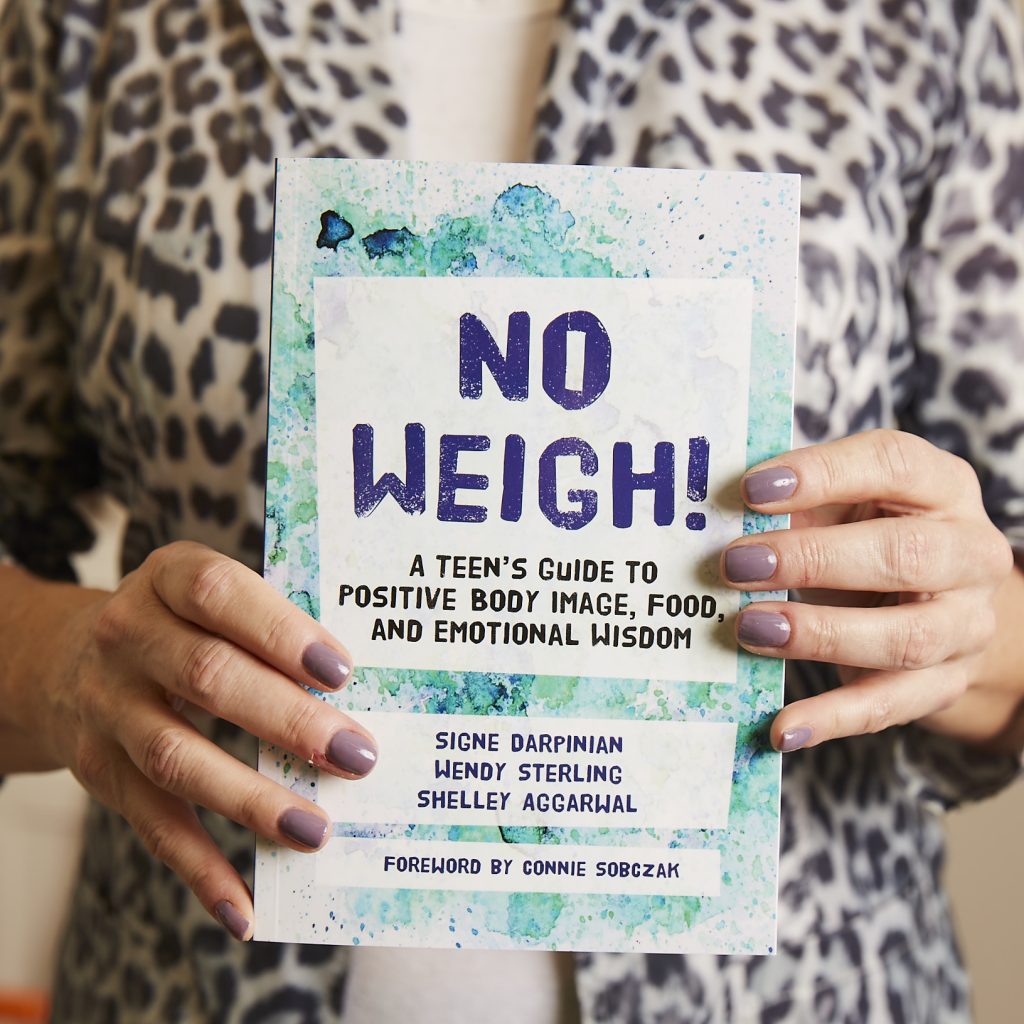
Dr. B. Timothy Walsh, and his team at Columbia Center for Eating Disorders, use the habit model as a tool to treat eating difficulties, disordered eating, and eating disorders. They state that the current thinking is that habits are not forgotten, even if they have not been engaged in for a long time. It makes sense that behaviors become habitual when they are rewarding and are done multiple times. For example, it would be far more pleasurable to have ice cream, than to do your homework after school.
But let’s say you begin to realize you are eating ice cream everyday without hunger, or in automatic, repetitive ways like a robot (same time, same flavor) and you decide you’d like more variety in food and activity choices, how might you break free from this habit?
The key is to substitute the old habit with a new one. In other words, don’t just grit your teeth when feeling a pull toward the ice cream without hunger in order to avoid having it that day. When you feel the first inkling of desire for ice cream, let’s say you are taking your first step toward the refrigerator, that is when you engage in a new habit. Ultimately it would be the same new behavior every single time until it becomes automatic. New behaviors might be: squeezing a stress ball, taking a walk around the block, or art-making (see art example below).
The challenge is to develop a new habitual behavior that is rewarding as well. Squeezing a stress ball doesn’t compare to a bowl of ice cream, so you’ve got to find a way to “fun up” your new habit. So, maybe art-making, in response to the cue of walking toward the fridge, could also become the new automatic behavior in response to the cue. This way you are creating a new groove.
Dr. Walsh goes on to say that a new repetitive behavior is like a hula-hoop in your brain. The more you engage in a behavior, the stronger the feedback loop that goes from your prefrontal cortex (thinking brain) to a deeper structure in the brain over time (also known as the dorsal striatum). In other words, it’s like there are loops between the prefrontal and the striatum in continuous feedback, and as they are practiced they move further back in the brain and deeper in their positioning. With practice, the same cue (urge to eat without hunger) will be paired with a new motor activity, like art-making, for example. And over time the urges will diminish all together.
Habit Reversal with Art: Redesign Your Relationship with Food
JKP author Margaret Hunter, an art therapist who writes about the importance of availability and abundance of art materials says: “The table with art supplies becomes a metaphor for the table set with food, both providing a kind of nourishment.”
When you feel a pull toward food without hunger, Margaret asserts, art-making is something you can engage in to get your creative juices flowing. Recurring engagement with art materials provides opportunities for activating the five senses: sight, smell, taste, touch and sound. New experiences that stimulate the brain enhance potential for growth, habit reversal and a new kind of foodless fulfillment (getting joy/pleasure from activities that don’t involve food).
To increase the likeliness of making art, the best possible environment for creativity should be established. Begin by designating a table or area that you can call your creative space. Select a variety of art materials and place them so they are visible and easily accessible. Place a protective covering on your table or space so you can feel free to be as creative as you want to be! Once you have established your creative space you can play with the art materials any way you like.
Some useful, fun art materials:
● papers in different sizes and colors
● scissors, glue and tape
● hole punch
● fabric and ribbon scraps
● coloring books
● pencils, pencil sharpener and eraser
● markers, pastels paints and brushes
● buttons, discarded jewelry and shiny objects feathers
● modeling clay
● whatever else you can think of!
Learning to regulate emotions in ways other than food is one part of the equation, finding foodless fulfillment is the other. In this time of social isolation, simply observe how you feel influences what you eat, and remember that emotional eating is a very normal part of a peaceful relationship to food as long as it doesn’t become habitual. See our workbook No Weigh! for skills and tools to regulate emotions in ways other than food.
JKP Resources:
● Recommended classroom reading grades K-5th grade: JKP author Sigrun Danielsdottir Your Body is Awesome.
● The Recovery Mama Guide to Your Eating Disorder Recovery in Pregnancy and Postpartum, JKP author Dr. Linda Shanti
● Reflections of Body Image in Art Therapy: Exploring Self through Metaphor and Multi-Media with JKP author Margaret Hunter
● No Weigh! A Teen’s Guide to Positive Body Image, Food and Emotional Wisdom with JKP authors Signe Darpinian, Wendy Sterling and Dr. Shelley Aggarwal
● JKP author Signe Darpinian is the host of Therapy Rocks! a personal growth podcast. Listen in on her interview with Dr. Steinglass, Professor of Psychiatry and the Associate Director of the Center for Eating Disorders at Columbia University Medical Center, on the habit-based model with food.
– Signe Darpinian and Wendy Sterling